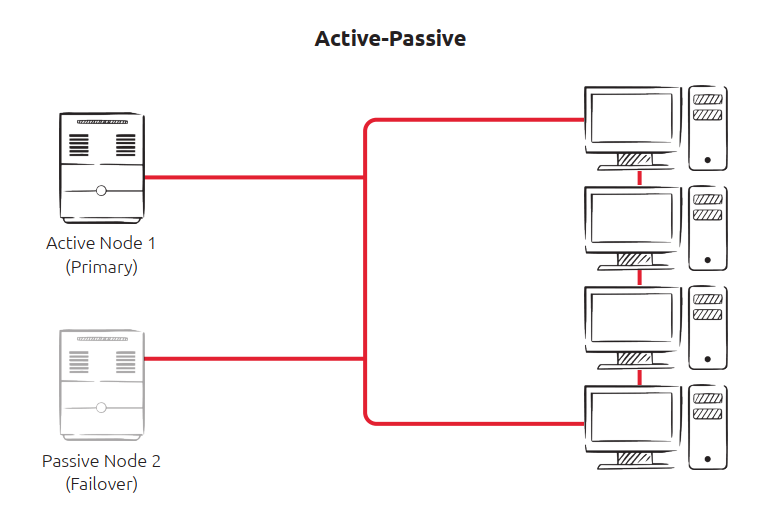High Availability with Application Clustering
What is Application Clustering?
Application clustering (also known as software clustering) uses software to configure multiple independent computer systems, referred to as nodes, into a cluster. The cluster of nodes then works together as a unified computing resource. A benefit of Application clustering over its hardware-based counterpart is that nodes can easily be added or removed from the application cluster as and when required. Application clustering is, therefore, more scalable.
Furthermore, because it does not require specialized hardware, an application cluster tends to be more economical and less complex to configure. For these reasons, application clustering is the commonly preferred method.
Benefits of Deploying MyQ X with Application Clustering
Increased resource availability – In a cluster of servers (nodes), resources such as compute power, memory etc. are shared. If one of the nodes requires maintenance or downtime, the other nodes can take over the workload.
Increased performance – In a cluster, compute resources of multiple nodes are combined to provide greater processing power than a single server can deliver on its own.
Greater scalability – As your user base and requirements grow you can easily assign more compute resources as required.
Reliability and Failover Support – Application clusters usually have a central system which continuously monitors the health of the nodes within the cluster. When there is a failure of a node within the application cluster, the system automatically assigns workload over to the remaining nodes. When combined with a shared storage solution, data is safeguarded during failure. There is little to no downtime for the user during the workload transition from one node to another.
In summary, by deploying MyQ X within an application failover cluster, you can protect your print and document services from planned and unplanned downtime. Secure print and document data. Keep users productive as there is no interruption of service during downtime.
Active-Passive Configurations
The typical active-passive cluster consists of at least two nodes. However, not all nodes are active in an active-passive configuration. For example, in a two-node design, the first node will be active, and the second node will be in passive or standby mode.
The passive (failover) server is a backup ready to take over if the active (primary) server disconnects or when the node fails.

Example of an Active-Passive cluster configuration
.png)